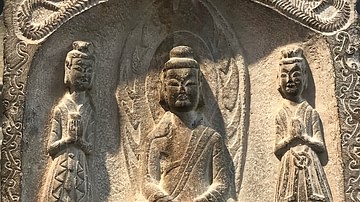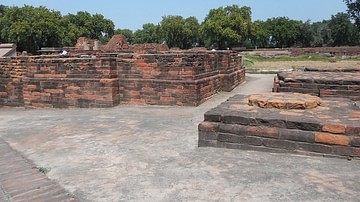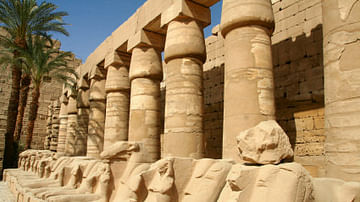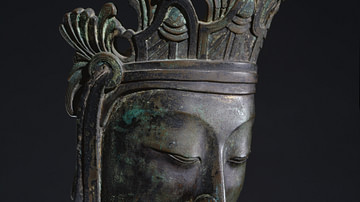Search
Search Results

Image
Buddhist Monastery Plan (Gandharan)
Plan of a typical Gandharan Buddhist monastery at Taxila from the site of Badalpur. Dated to 2nd - 5th Cent CE

Image
Chinese Buddhist Votive Stele
This Buddhist votive stele made from chalkstone comes from China's Shanxi province, and it dates from c. 520 CE during the era of the Northern Wei Dynasty. (Museum Rietberg, Zürich)

Image
Remains of a Buddhist Monastery, Sarnath
Remains of a Buddhist monastery around the Dharmarajika Stupa. Sarnath, Uttar Pradesh, India, 3rd century BCE.

Definition
Fire Temple
Fire Temples are places of worship in the Zoroastrian religion. They were known as ataskada (“house of fire”) by the Persians but are best known today by their Greek name pyratheia (fire temple). They are thought to have originated from the...

Definition
Karnak
Karnak is the modern-day name for the ancient site of the Temple of Amun at Thebes, Egypt. The Egyptians called the site Nesut-Towi, "Throne of the Two Lands", Ipet-Iset, "The Finest of Seats" as well as Ipt-Swt, "Selected Spot" also given...

Image
Korean Buddhist 'Emille' Bell
The large cast-bronze bell known as the Emille Bell at Bongdeoksa, Unified Silla Kingdom, Korea. It was cast in 771 CE to honour King Seongdeok. 3.3 metres tall and over 2.2 metres in diameter, it is decorated with lotus flowers and heavenly...

Image
Fragments from a Buddhist Stupa in Afghanistan
This fragment comes from Stupa B23, which used to be located at the Monastery of Bagh-Gai (facing southwest) in Hadda, Aghanistan. It dates from the 3rd-4th centuries CE. (Musée Guimet, Paris)

Article
Sailing on Lake Nasser towards Abu Simbel
In ancient times, the First Cataract at Aswan marked the southern frontier of Egypt. Beyond lay the land of Nubia, which stretched along the river Nile from the First Cataract southwards for about 250 kilometres (155 mi). This region, known...

Definition
Ancient Korean Sculpture
The sculpture of ancient Korea was dominated by Buddhist themes such as figurines and monumental statues of the Buddha and his followers, and large bronze bells for temples. Gilded-bronze was the most common material used by Korean sculptors...

Definition
Tara
Tara is a female deity in both Hinduism and Buddhism who personifies compassion and offers salvation from the suffering of rebirth and death. She is thought to have been born of empathy for the suffering world and is regularly invoked for...